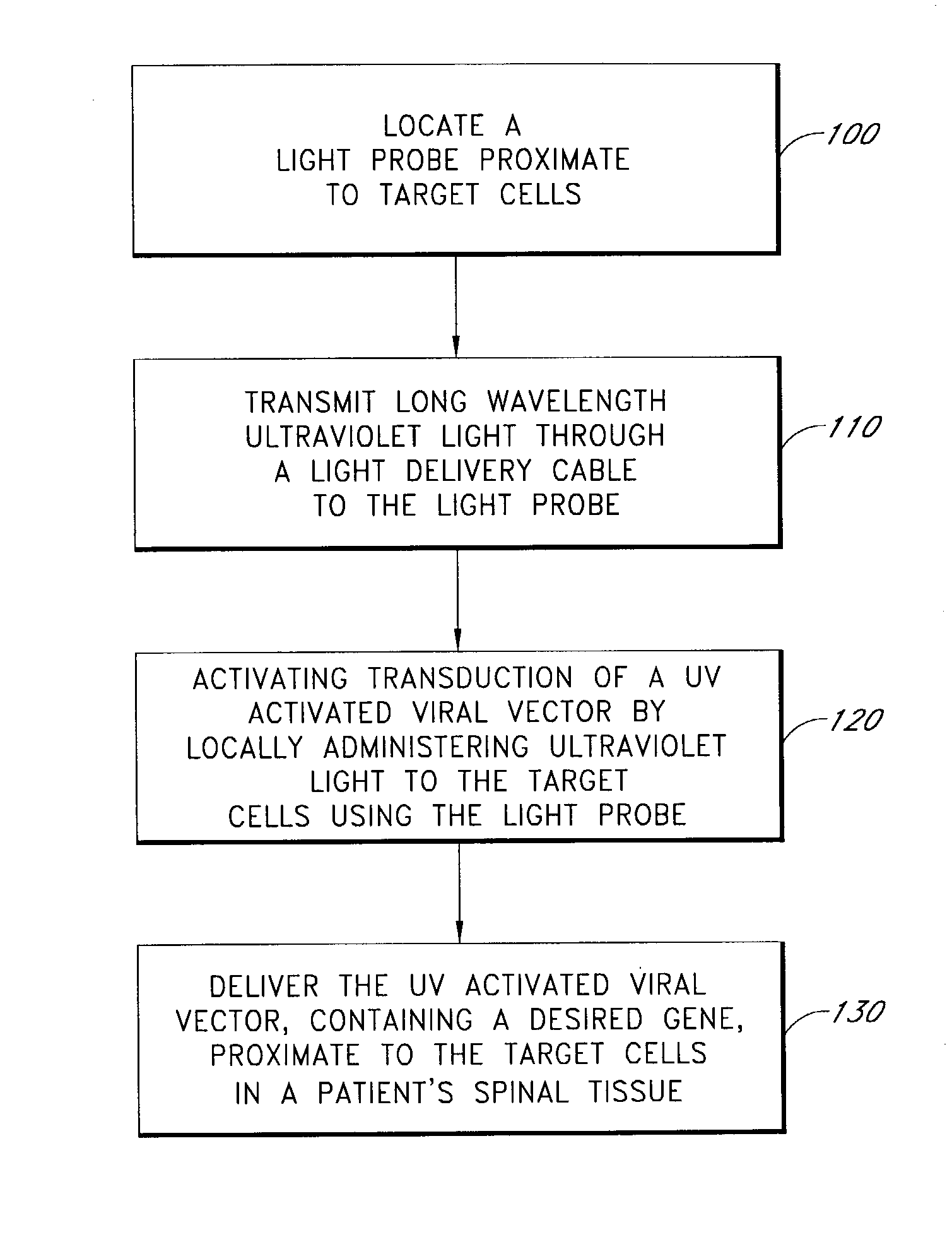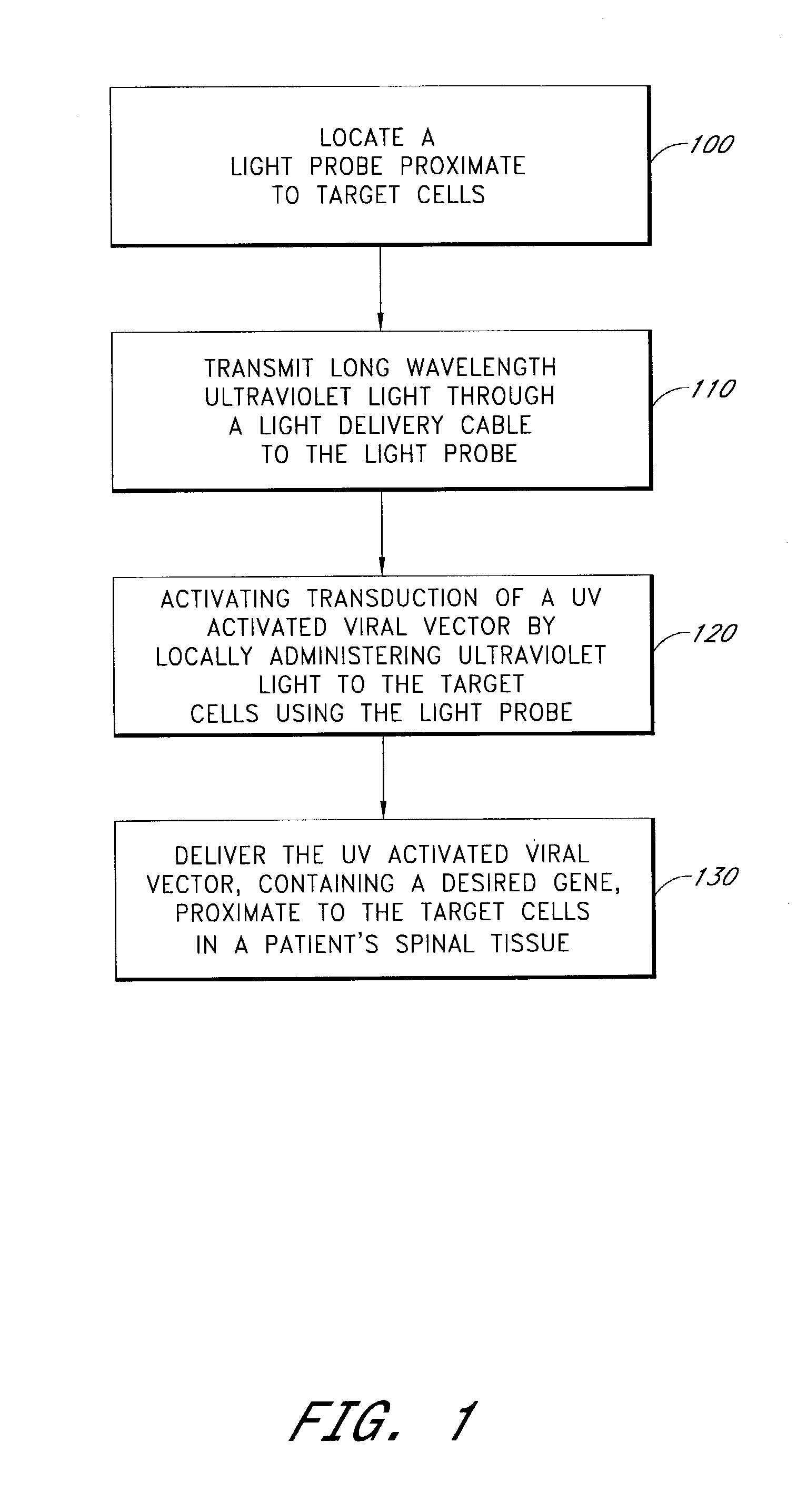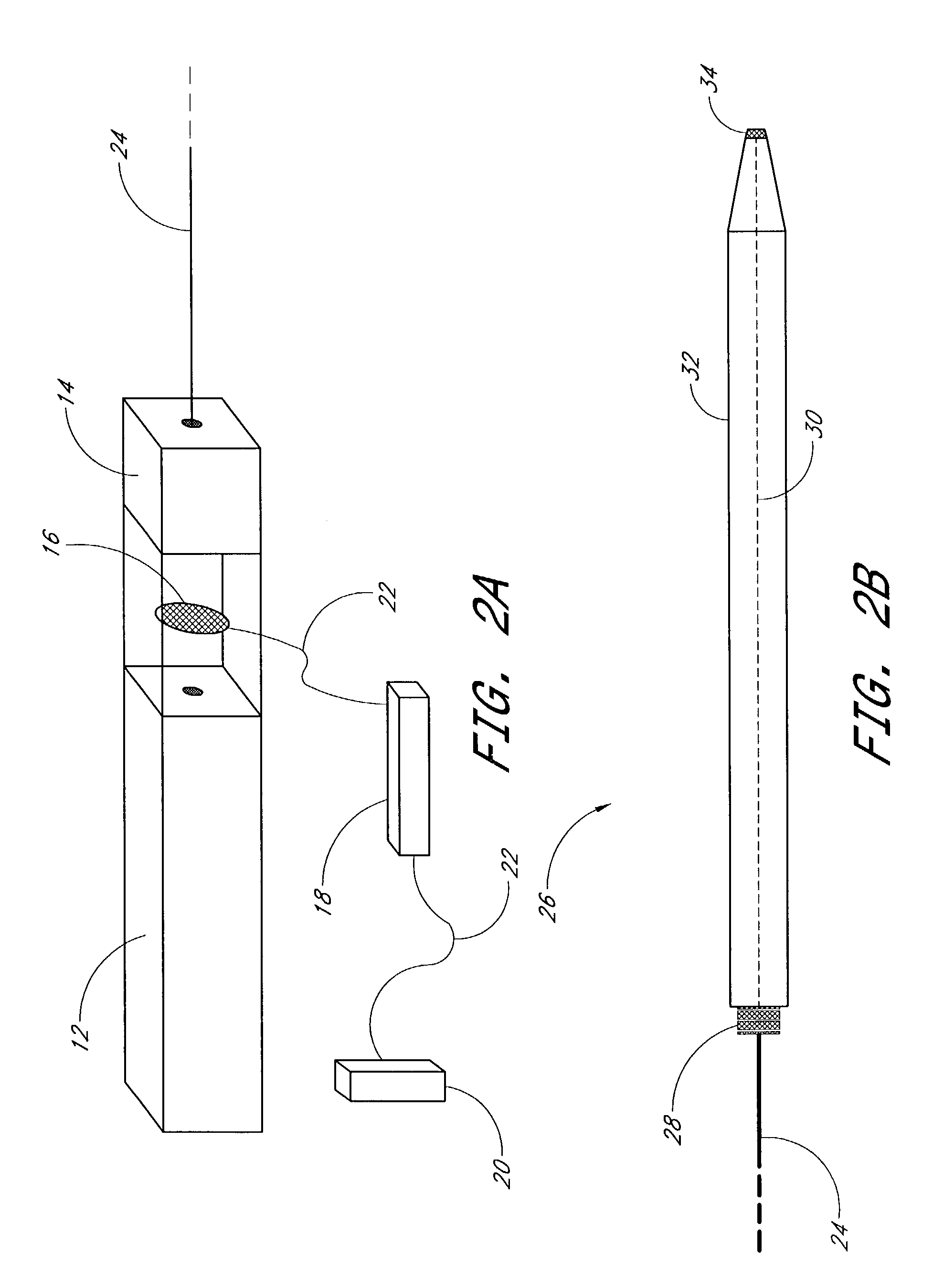Light activated gene transduction using long wavelength ultraviolet light for cell targeted gene delivery
a technology of light-activated gene and cell-targeted gene delivery, which is applied in the field of gene therapy, can solve the problems of impracticality in using dna damaging agents, no effective therapeutic method or apparatus developed based on these experiments, and the rate limitation step of second strand synthesis is impractical, so as to effectively stimulate the transduction of uv-activated viral vectors
- Summary
- Abstract
- Description
- Claims
- Application Information
AI Technical Summary
Benefits of technology
Problems solved by technology
Method used
Image
Examples
example 1
I. Methods
[0055]A. Isolation of Human Mesenchymal Stem Cells
[0056]Human Mesenchymal Stem Cells (hMSC) were isolated from patient blood samples harvested from the iliac crest. The blood samples were diluted in an equal volume of sterile Phosphate Buffered Saline (PBS). The diluted sample was then gently layered over 10 ml of Lymphoprep (Media Prep) in a 50 ml conical tube (Corning). The samples were then centrifuged at 1800 rpm for 30 minutes. This isolation protocol is a standard laboratory technique, and the resulting gradient that formed enabled the isolation of the hMSCs from the layer immediately above the Lymphoprep. The isolated fraction was placed into a new 50 ml conical tube, along with an additional 20 ml of sterile PBS. The sample was centrifuged at 1400 rpm for 8 minutes. The supernatant was removed the cell pellet was resuspended in 20 ml for fresh PBS, and centrifuged again for 8 minutes at 1400 rpm. Afterwards the supernatant was removed, the cell pellet was resuspend...
PUM
| Property | Measurement | Unit |
|---|---|---|
| wavelength | aaaaa | aaaaa |
| wavelength | aaaaa | aaaaa |
| wavelength | aaaaa | aaaaa |
Abstract
Description
Claims
Application Information
 Login to View More
Login to View More - R&D
- Intellectual Property
- Life Sciences
- Materials
- Tech Scout
- Unparalleled Data Quality
- Higher Quality Content
- 60% Fewer Hallucinations
Browse by: Latest US Patents, China's latest patents, Technical Efficacy Thesaurus, Application Domain, Technology Topic, Popular Technical Reports.
© 2025 PatSnap. All rights reserved.Legal|Privacy policy|Modern Slavery Act Transparency Statement|Sitemap|About US| Contact US: help@patsnap.com



